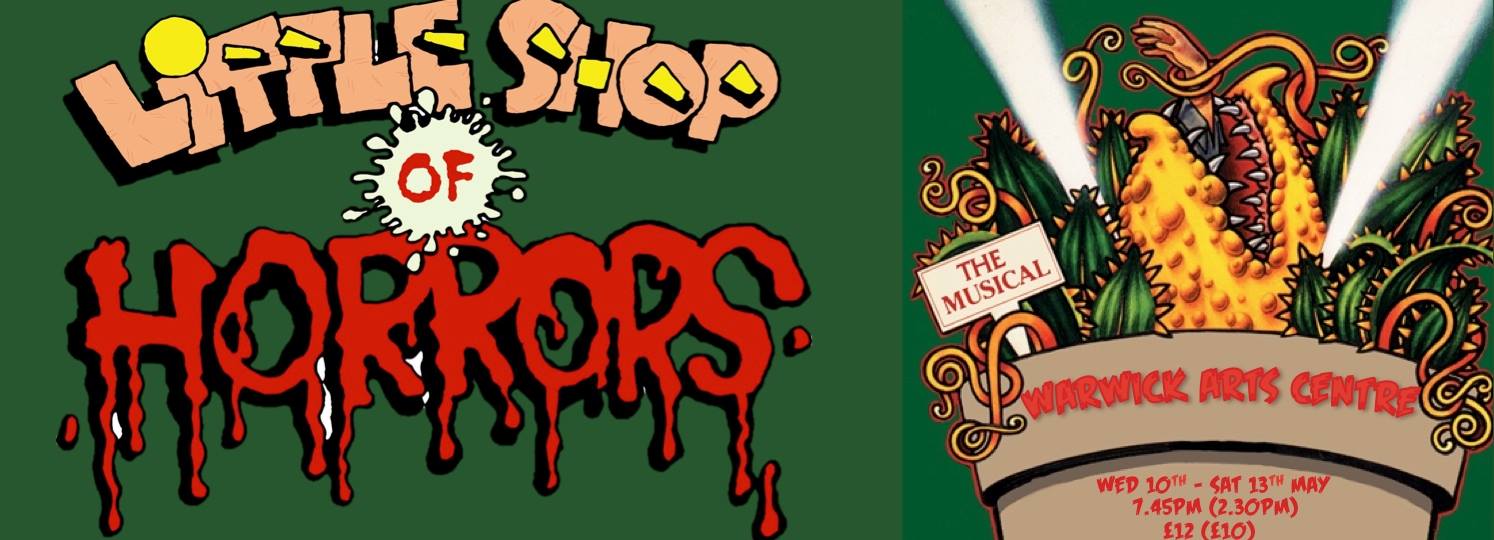‘Sassy, convincing and mad’: MTW’s Little Shop of Horrors
We’ve all seen the references and spin-offs for this musical, and the little I knew about it led me to think it very strange. Written as a film in 1960 and adapted into a musical in 1962, Little Shop of Horrors is a black comedy mixed with horror. Seymour, an unlucky florist, discovers and raises a plant that feeds only on human flesh and blood.
Having researched the bizarre storyline, I wondered how it could be performed without seeming unreal and ridiculous. Thirty seconds of MTW singing changed my mind. The original score is in the style of early 1960s rock and roll with a hint of soul music. This was maintained brilliantly by the musicians and gave the score an upbeat and bouncy twist.
Having researched the bizarre storyline, I wondered how it could be performed without seeming unreal and ridiculous. Thirty seconds of MTW singing changed my mind
The vocals were outstanding throughout. Crystal, Chiffon and Ronnette, a choral trio who introduce, support and beautifully endorse nearly every scene and character, were fantastically performed by Abha-Rohanna Calindi, Sophie Hill and Nadia Dawber, bringing life and power to every song. The strength and depth of range of every performer was one of the key aspects of the play’s emotional depth that went beyond the comedy on the surface.
Sam Cochrane’s hapless Seymour was a strong foundation for the rest of the characters to build on, defining the twists and turns of the story with his emotional responses to events and embodiment of the farce that this musical is so famous for. There were cringe-worthy moments, but you feel happy to cringe. There were surreal parts where you had no idea what was going on, but that was okay.
Sam Cochrane’s hapless Seymour was a strong foundation for the rest of the characters to build on, defining the twists and turns of the story with his emotional responses to events
Seymour’s secret love is Audrey, a simple, pretty girl trapped in an abusive relationship. Audrey was performed by Kelly Slade with much more substance than her superficial portrayal in the famous 1986 movie adaptation. In MTW’s production her modest dreams are given value by Slade’s fun but gentle presentation.
However, a personal favourite without fail was Florian Pierre Panzierei, who played the alarmingly sadistic dentist Orin. He managed to turn dark and cruel scenes into hysterical comedy, dragging the timid Seymour into the audience to examine and roar at their teeth.
The detail, capacity and ability of each Audrey II, especially the final model, was amazing
The props cannot go unmentioned: the plant – aptly named Audrey II by Seymour – grows bigger and bigger, eventually turning into a puppet big enough to ‘swallow’ people. The detail, capacity and ability of each Audrey II, especially the final model, was amazing. The set, sound and lighting were strong and professional, with a rotating shop space that made scene transitions clear. The costumes gave a more modern feel, but still kept a comfortable and authentic originality.
The suspicious and yet likeable plant personality Audrey II, humorously voiced by Cole McClaren Bailey, bursts into importance in “Feed Me,” seducing Seymour into feeding it flesh and blood with promises of fame, success and the original Audrey’s love. The voice of Audrey II was a little loud at some points, though this may have been to show how the plant’s influence grows.
Despite its humour, there remained the underlying question asking how far we are willing to go to be successful, to be noticed and to be wanted
Overall, this production offered that delightful weirdness unique to musicals, while keeping an undertone of sadness as Seymour pays the ultimate price for his decisions. Despite its humour, there remained the underlying question asking how far we are willing to go to be successful, to be noticed and to be wanted.
Ultimately, MTW’s production was sassy, convincing and mad. In the best possible way. Absolutely brilliant theatre.


Comments